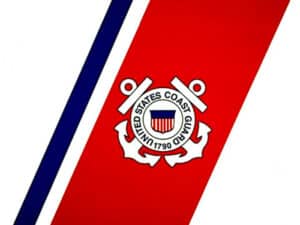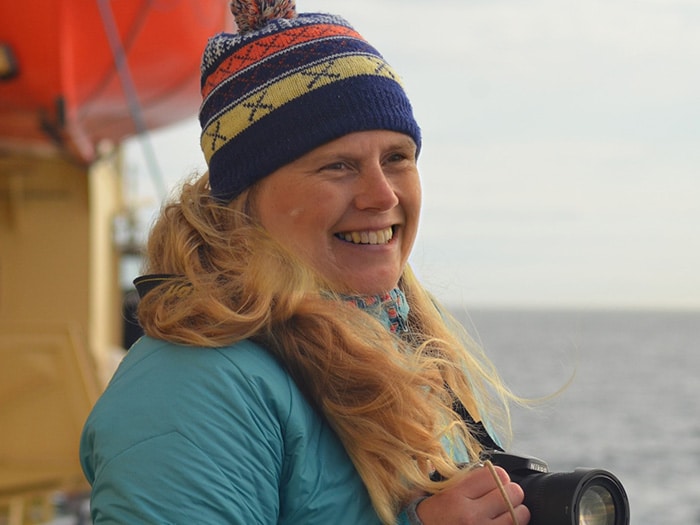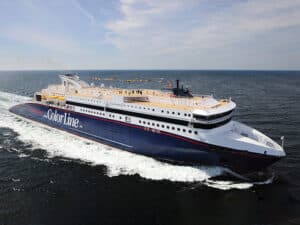
Scrubber discharges come under renewed fire
Written by Nick Blenkey
Chalmers researcher Anna Lunde Hermansson: “Stricter regulation of discharge water from scrubbers is crucial to reduce the deterioration of the marine environment.”
Metals and other environmentally hazardous substances in ships’ scrubber discharge water are putting the marine environment at risk, according to a new study from researchers at Sweden’s prestigious Chalmers University of Technology. When the researchers calculated the contaminant load from these emissions into the marine environment in four ports, they found that water discharged from ships’ scrubbers accounted for for more than 90% of the contaminants.
“The results speak for themselves. Stricter regulation of discharge water from scrubbers is crucial to reduce the deterioration of the marine environment,” says Anna Lunde Hermansson, a doctoral student at the Department of Mechanics and Maritime Sciences at Chalmers.
Traditionally, environmental risk assessments (ERA) of emissions from shipping are based on one source at a time. For example, the ERA might look at the risk from copper in antifouling paints. But as with all industries, shipping is an activity where there are multiple sources of emissions.
“A single ship is responsible for many different types of emissions. These include graywater and blackwater, meaning discharges from showers, toilets and drains, antifouling paint, and scrubber discharge water. That is why it’s important to look at the cumulative environmental risk in ports,” says Lunde Hermansson who, with colleagues Ida-Maja Hassellöv and Erik Ytreberg, undertook the new study.
Used to remove sulfur from heavy fuel oil in order to meet the limits imposed by IMO in 2020, scrubbers (or exhaust gas cleaning systems) use seawater in the cleaning process.
The only problem, says Chalmers, is that the water not only takes up the sulphur from the exhaust gases, leading to acidification of the scrubber water, but also other contaminants such as heavy metals and toxic organic compounds. The contaminated scrubber water is then most usually pumped directly into the sea.
“There is no cleaning step in between – so up to several hundred cubic meters of heavily contaminated water can be pumped out every hour from a single ship,” says Lunde Hermansson. “Although new guidelines for ERAs of scrubber discharges are in progress, the ERAs still only assess one source of emissions at a time, which means that the overall assessment of the environmental risk is inadequate.”
In the study, the researchers at Chalmers looked at four different types of port environments to determine contaminant concentrations from five different sources. Actual data from Copenhagen and Gdynia were used for two of the ports. They were selected due to high volumes of shipping traffic, and a substantial proportion of these ships having scrubbers.
The results showed that the cumulative risk levels in the ports were, respectively, five and thirteen times higher than the limit that defines acceptable risk.
¨¨
Port descriptions used internationally in ERAs were utilized for the other two port environments. One of these environments has characteristics typical of a Baltic Sea port, while the other represents a European port with efficient water exchange due to a large tidal range.
The researchers found that three out of the four port environments were prone to unacceptable risks according to the assessment model used. They also saw that it was emissions from antifouling paint and scrubber discharge water that accounted for the highest levels of hazardous substances in the marine environment and had the highest contribution to the risk. More than 90 per cent of the environmentally hazardous metals and PAHs (polycyclic aromatic hydrocarbons) came from scrubber discharge water, while antifouling paints accounted for the biggest load of copper and zinc.
“If you look at only one emissions source, the risk level for environmental damage may be low or acceptable. But if you combine multiple individual emissions sources, you get an unacceptable risk. The marine organisms that are exposed to contaminants and toxins don’t care about where the contaminants come from, it is the total load that causes the damage,” says Lunde Hermansson.
The only port environment that showed an acceptable risk in the researchers’ ERA was the model with the highest water exchange per tidal period, meaning that a high volume of water is exchanged in the port as the tide moves in and out.
“It’s important to remember that the contaminated water doesn’t just disappear – it is transported elsewhere. In the port environments studied, there might be a kind of acceptance of environmental damage – that in this particular environment we have decided that we will have an industry and that it will result in pollution. However, when the contaminated water is washed out to sea, it can end up in pristine sea areas and have even greater consequences. This is something we address in our research. We look at the total load, how much is actually discharged into the environment,” says Lunde Hermansson.
SCRUBBER DISCHARGE BANS
A number of jurisdictions have already banned scrubber discharges (the Britannia P&I Club published its most recent listing of them in November 2022). That list could grow.
The Swedish Agency for Marine and Water Management and the Swedish Transport Agency have submitted a proposal to the Swedish Government to prohibit the discharge of scrubber water into internal waters, that is, waters that lie within the Swedish archipelago.
“It’s a step in the right direction, but we would have liked to see a stronger ban that extends across larger marine areas, while we also understand the challenge for individual countries to regulate international shipping,” says Erik Ytreberg, an associate professor at the Department of Mechanics and Maritime Sciences at Chalmers.
CONTROVERSY.
Closed loop scrubbers that retain discharge water on board are available as are open loop scrubbers that can be converted to closed loop. Those options cost more and the majority of scrubbers in operation are open loop systems that discharge wash water directly to sea.
The study findings are not likely to find a warm welcome from the Clean Shipping Alliance, which represents shipowners who use the technology, or the EGCSA (Exhaust Gas Cleaning System Association), which represents manufacturers.
Meantime, scrubbers do not look likely to go away, although closed loop systems may become a preferred option. In fact, they could have provide a pathway to onboard carbon capture and storage (CCS), with Wärtsilä among the manufacturers working on this and already booking orders for CCS-ready systems.




